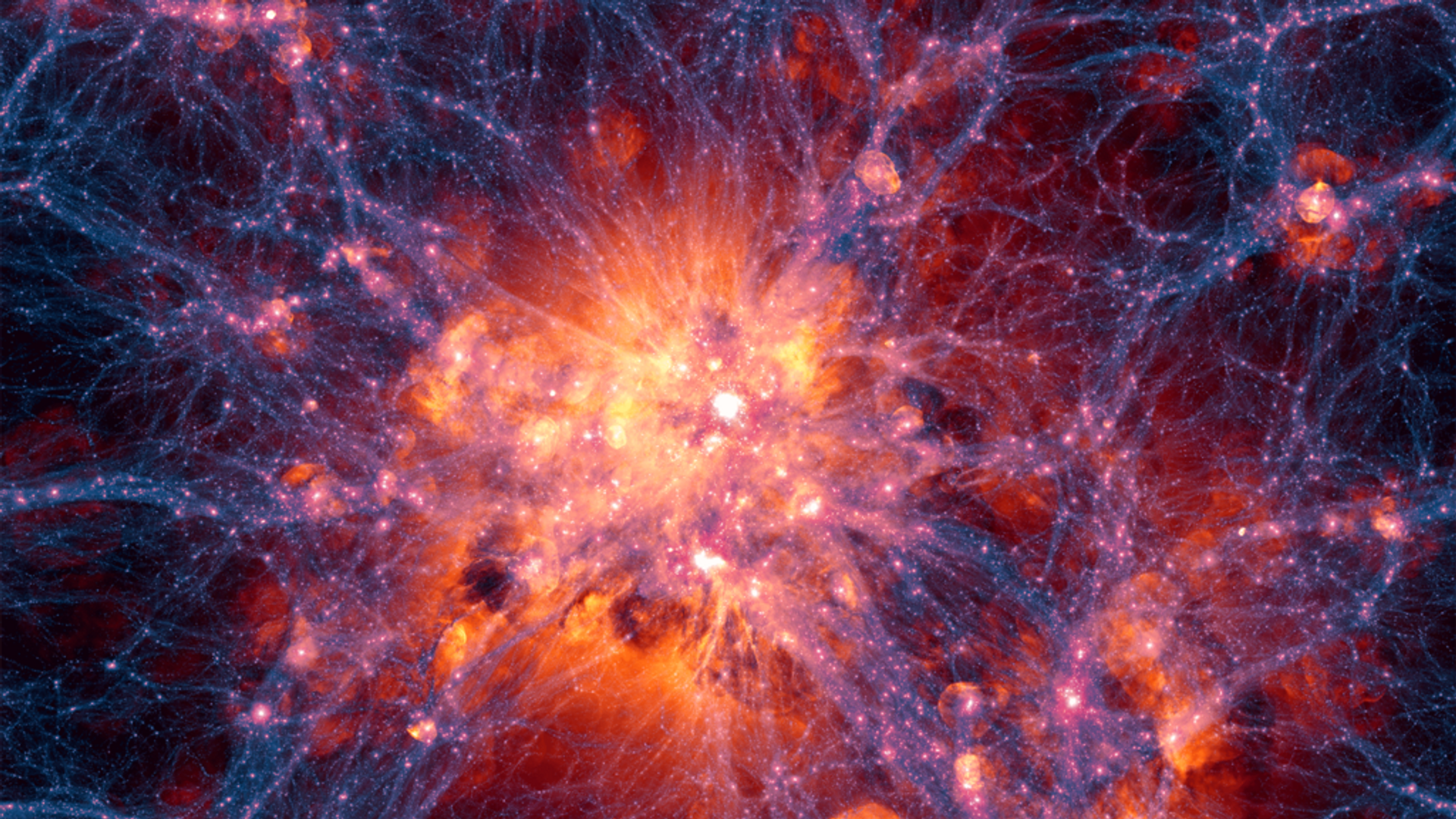https://sputnikglobe.com/20220513/alleged-invisible-space-walls-may-shed-light-on-universes-origin-1095493073.html
Alleged Invisible ‘Space Walls’ May Shed Light on Universe’s Origin
Alleged Invisible ‘Space Walls’ May Shed Light on Universe’s Origin
Sputnik International
Dark matter, which appears to make up most of the Universe’s mass, remains one of the biggest mysteries that scientists have repeatedly tried to solve. 13.05.2022, Sputnik International
2022-05-13T14:31+0000
2022-05-13T14:31+0000
2022-05-13T14:31+0000
scientists
theory
study
universe
dark matter
https://cdn1.img.sputnikglobe.com/img/107852/75/1078527561_0:225:1024:801_1920x0_80_0_0_c987d55d8596b1b9af4a6dcd85f97edf.png
Shedding light on the origin of the Universe is never easy. Researchers, however, aren’t sitting on their hands, with two scientists having recently suggested the existence of a new “fifth force” in outer space.The “fifth force” may pose a challenge to the Universe origin-related standard cosmological concept known as the Lambda cold dark matter (ΛCDM) model.In a study yet to be peer-reviewed, two researchers from the University of Nottingham claimed that hypothetical particles known as symmetrons could prod the “fifth force” to form “domain walls,” or invisible boundaries in space.According to the researcher, “That’s the context in which people study theories like symmetron theory — it’s a new particle candidate for dark energy and/or dark matter.”The standard model is comprised of three key components, including Albert Einstein’s cosmological constant, a coefficient that explains his equations of general relativity. The two other components are cold dark matter, which is slow moving particles that don’t emit radiation, and conventional matter that we interact with every day.The Nottingham-based theory may revolutionise the ΛCDM model, given that symmetrons have been proposed to fill in some of the missing links in order to help explain the existence of dark matter and dark energy, a phenomena that appears to be making the Universe expand at an accelerated rate.The standard theory stipulates that smaller galaxies should be captured by the gravitational pull of larger host galaxies and forced into chaotic orbits, something that has yet to be proved in real world observations and that the two scientists’ study may help to explain. According to the researchers, symmetron particles forming invisible walls between them could trigger smaller galaxies to form disks around much bigger hosts.However, many await the conclusive proof of symmetrons’ existence, with advanced space instruments, such as the James Webb telescope which currently helps scientists observe parts of the early universe, expected to solidify the theory.
https://sputnikglobe.com/20220411/dark-matter-could-originate-from-other-dimensions-study-suggests-1094667625.html
Sputnik International
feedback@sputniknews.com
+74956456601
MIA „Rossiya Segodnya“
2022
Oleg Burunov
https://cdn1.img.sputnikglobe.com/img/07e4/09/0b/1080424846_0:0:2048:2048_100x100_80_0_0_3d7b461f8a98586fa3fe739930816aea.jpg
Oleg Burunov
https://cdn1.img.sputnikglobe.com/img/07e4/09/0b/1080424846_0:0:2048:2048_100x100_80_0_0_3d7b461f8a98586fa3fe739930816aea.jpg
News
en_EN
Sputnik International
feedback@sputniknews.com
+74956456601
MIA „Rossiya Segodnya“
Sputnik International
feedback@sputniknews.com
+74956456601
MIA „Rossiya Segodnya“
Oleg Burunov
https://cdn1.img.sputnikglobe.com/img/07e4/09/0b/1080424846_0:0:2048:2048_100x100_80_0_0_3d7b461f8a98586fa3fe739930816aea.jpg
scientists, theory, study, universe, dark matter
scientists, theory, study, universe, dark matter
Alleged Invisible ‘Space Walls’ May Shed Light on Universe’s Origin
Dark matter, which appears to make up most of the Universe’s mass, remains one of the biggest mysteries that scientists have repeatedly tried to solve.
Shedding light on the origin of the Universe is never easy. Researchers, however, aren’t sitting on their hands, with two scientists having recently suggested the existence of a new “fifth force” in outer space.
The “fifth force” may pose a challenge to the Universe origin-related standard cosmological concept known as the Lambda
cold dark matter (ΛCDM) model.
In a study yet to be peer-reviewed, two researchers from the University of Nottingham claimed that hypothetical particles known as symmetrons could prod the “fifth force” to form “domain walls,” or invisible boundaries in space.
“We know that we need new particles because we have dark matter and dark energy and so we suspect that we’re going to need to add new particles to our standard model to account for those things”, Aneesh Naik, a research fellow at the University of Nottingham and lead author of the study, was quoted as saying by Vice.
According to the researcher, “That’s the context in which people study theories like symmetron theory — it’s a new particle candidate for dark energy and/or dark matter.”
The standard model is comprised of three key components, including Albert Einstein’s cosmological constant, a coefficient that explains his equations of general relativity. The two other components are cold dark matter, which is slow moving particles that don’t emit radiation, and conventional matter that we interact with every day.
The Nottingham-based theory may revolutionise the ΛCDM model, given that symmetrons have been proposed to fill in some of the missing links in order to help explain the existence of dark matter and dark energy, a phenomena that appears to be making the Universe expand at an accelerated rate.
The standard theory stipulates that smaller galaxies should be captured by the gravitational pull of larger host galaxies and forced into chaotic orbits, something that has yet to be proved in real world observations and that the two scientists’ study may help to explain. According to the researchers, symmetron particles forming invisible walls between them could trigger smaller galaxies to form disks around much bigger hosts.
However, many await the conclusive proof of symmetrons’ existence, with advanced space instruments, such as the James Webb telescope which currently helps scientists observe parts of the early universe, expected to solidify the theory.



